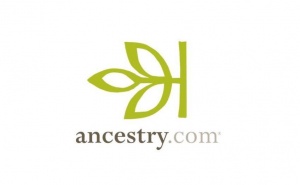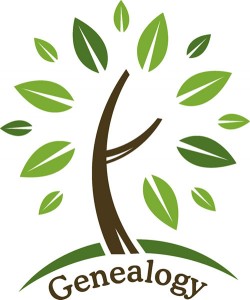Difference between revisions of "Genealogy platforms"
(→Examples of Genealogy Websites) |
(→Introduction) |
||
| Line 5: | Line 5: | ||
* '''Ancestry.com''': Ancestry.com is a privately owned company and the number one for-profit genealogy company in the world. Ancestry operates a network of genealogical, historical record, genetic genealogy websites. <ref> “Ancestry.com” Wikipedia, Wikimedia Foundation, 12 Mar. 2019, en.wikipedia.org/wiki/Ancestry.com</ref> | * '''Ancestry.com''': Ancestry.com is a privately owned company and the number one for-profit genealogy company in the world. Ancestry operates a network of genealogical, historical record, genetic genealogy websites. <ref> “Ancestry.com” Wikipedia, Wikimedia Foundation, 12 Mar. 2019, en.wikipedia.org/wiki/Ancestry.com</ref> | ||
* '''Billion Graves''': The largest platform for tracing cemetery data. Users contribute to the website by collecting headstone images from cemeteries and transcribing the personal information found on the images. <ref>"BillionGraves" BillionGraves Holdings, Inc. 2019. </ref> | * '''Billion Graves''': The largest platform for tracing cemetery data. Users contribute to the website by collecting headstone images from cemeteries and transcribing the personal information found on the images. <ref>"BillionGraves" BillionGraves Holdings, Inc. 2019. </ref> | ||
| − | * '''FamilySearch'': The largest genealogy organization run by the Church of the Latter Day Saints. FamilySearch gathers, preserves, and shares genealogical records worldwide, and offers free access to its resources. <ref> "FamilySearch" Wikipedia, Wikimedia Foundation, 7 Apr 2019. https://en.wikipedia.org/wiki/FamilySearch</ref> | + | * '''FamilySearch''': The largest genealogy organization run by the Church of the Latter Day Saints. FamilySearch gathers, preserves, and shares genealogical records worldwide, and offers free access to its resources. <ref> "FamilySearch" Wikipedia, Wikimedia Foundation, 7 Apr 2019. https://en.wikipedia.org/wiki/FamilySearch</ref> |
==How They Work== | ==How They Work== | ||
Revision as of 21:05, 20 April 2019
Contents
Introduction
Genealogy platforms are online sites which are used to gather, organize, and present genealogical data. They allow users to trace their genealogy, by some combination of providing family information (i.e. birth dates, marriage dates, etc.) and submitting a DNA sample. These sites are often massive databases, many containing billions of records and family trees compiled from their own resources and their users. Popular examples of this include Ancestry.com, BillionGraves, and Family Search, where users can pay for premium accounts to receive records on their family history.
Examples of Genealogy Websites
- Ancestry.com: Ancestry.com is a privately owned company and the number one for-profit genealogy company in the world. Ancestry operates a network of genealogical, historical record, genetic genealogy websites. [1]
- Billion Graves: The largest platform for tracing cemetery data. Users contribute to the website by collecting headstone images from cemeteries and transcribing the personal information found on the images. [2]
- FamilySearch: The largest genealogy organization run by the Church of the Latter Day Saints. FamilySearch gathers, preserves, and shares genealogical records worldwide, and offers free access to its resources. [3]
How They Work
Records
The vast majority of the information compiled in genealogy platforms consists of digitized records. At a minimum, genealogy software prompts the user to enter the date and place of an individual’s birth, marriage, and death, and stores the relationships of individuals to their parents, spouses, and children. As genealogy platforms have grown more popular and successful, they have grown to accommodate less common relationships that previously were not accounted for. Examples include: children born out of wedlock, unorthodox spousal relationships, etc. [4]The platform builds a family tree from the information the user has provided, but also accommodates and encourages the inclusion of details from an individual's life: notes, photographs and multimedia, and source citations. This helps provide future users with a more detailed picture of the people in the family tree, and also increases the chances of a user recognizing the information of an individual as an something which links them to their own family tree.
Once a user has entered as much information as they can, the platform will search their own vast databases for entries of individuals, families, or documents which are likely to be connected to the user. This may lead a user to unknown information about their family -- sometimes unseen photos or records of education or employment -- or even unknown relatives or ancestors. Many platforms allow messaging so that two users who may be related may contact each other through the website. Genealogy software programs can produce a variety of graphical charts and text reports, such as pedigree charts, ahnentafel reports, and Register reports[5] which can help a user make sense of the information provided to them Some platforms include additional fields relevant to particular religions. Others focus on certain geographical regions. For example, having a field for the family's coat of arms is only relevant if the family comes from a part of the world that uses them.
DNA
To supplement their records many platforms use DNA tests. A genealogical DNA test takes special interest in the specific locations of a genome which relate to genealogy. A DNA sample helps to both find and verify ancestral genealogical relationships,[6] leading users to more relatives or ancestors they never knew they had. Some platforms also estimate the ethnic/geographical origins of an individual. Often they will provide information on where and when a user’s family moved, and speculation as to why they might have moved based on historical events. Some platforms will also provide insight on a user’s traits (such as freckles, aversion to cilantro, etc.). [7] This allows users to compare traits with relatives, learn the ethnic origin of the trait, and who in their family may have contributed to the prevalence of that trait in them.
Ethics
Inaccuracy
Genealogy platforms have been scrutinized for their lack of accuracy. While much of their information comes from their own records that they have compiled, much of it comes from users who may be unreliable. If a user enters a birth date inaccurately, intentionally or unintentionally, they may provide inaccurate relationships and analysis for many other users. Additionally, since different testing companies use different ethnic reference groups, consisting of now living test persons with unknown pre-census time origins, the ethnic/geographical estimations are typically highly contradictory among companies. Additionally, the results are based on the false premise that populations tend to stay in one place when in fact human populations are notorious for frequent movements.[8] This means that genetic information linked to a certain geographical location can’t be tied to one group of people with any certainty. Genealogy platforms are aware of this inaccuracy, but their goal is to obtain and maintain a base of loyal customers by offering as much information as possible. This type of mistruth employed to achieve an end is a dangerous step toward ignoring the truth entirely. With this precedent in place, other companies may also find it acceptable to report mistruths to their consumers, while the will have no way to know what is truth and what is not. [9]
Privacy
Once a user’s information (manually entered, gleaned from digitized records, or DNA related) is added to a genealogy platform, all of that information is available for both the platform and other users to access. This is the principle upon which many genealogy platforms were built and helps the platforms to run successfully. However, this raises many privacy concerns the largest of which is that DNA information on a genealogy platform is not protected by HIPPA.[10] Genealogy platforms have the potential to greatly reduce the amount of informational friction [11] an individual can expect others to encounter when searching for information about them. As a result, a user of a genealogy platform may find that an enormous amount of their personal information, and in some cases personal family documents, may be easily found by anyone. It is not only the individual user who is affected. DNA information can provide information about all the individuals related to the user -- as far removed as fourth cousins. The ethical implications of this are dire. If technology becomes advanced enough to reliably attach behavioral characteristics to genomes, an employer could choose not to hire you based on your or your cousin’s online DNA sample.
References
- ↑ “Ancestry.com” Wikipedia, Wikimedia Foundation, 12 Mar. 2019, en.wikipedia.org/wiki/Ancestry.com
- ↑ "BillionGraves" BillionGraves Holdings, Inc. 2019.
- ↑ "FamilySearch" Wikipedia, Wikimedia Foundation, 7 Apr 2019. https://en.wikipedia.org/wiki/FamilySearch
- ↑ “Who Were They?” MyHeritage, www.myheritage.com/.
- ↑ “Genealogy Software.” Wikipedia, Wikimedia Foundation, 22 Dec. 2018, en.wikipedia.org/wiki/Genealogy_software.
- ↑ “Genealogical DNA Test.” Wikipedia, Wikimedia Foundation, 28 Mar. 2019, en.wikipedia.org/wiki/Genealogical_DNA_test#Audience.
- ↑ “20 Million Members Have Connected To a Deeper Family Story.” Ancestry, www.ancestry.com/.
- ↑ “Pulling Back the Curtain on DNA Ancestry Tests.” Tufts Now, 30 Apr. 2018, now.tufts.edu/articles/pulling-back-curtain-dna-ancestry-tests.
- ↑ Frankfurt, Harry. "Truth, Lies, and Bullshit". 2009.
- ↑ Fottrell, Quentin. “Genealogy Sites Are Wild West of Privacy - Here's What You Give Away with Your DNA.” MarketWatch, 5 May 2018, www.marketwatch.com/story/genealogy-site-traps-alleged-serial-killer-how-your-dna-could-be-used-against-you-2018-04-28.
- ↑ Floridi, Luciano. "Informational Friction". 2004.

